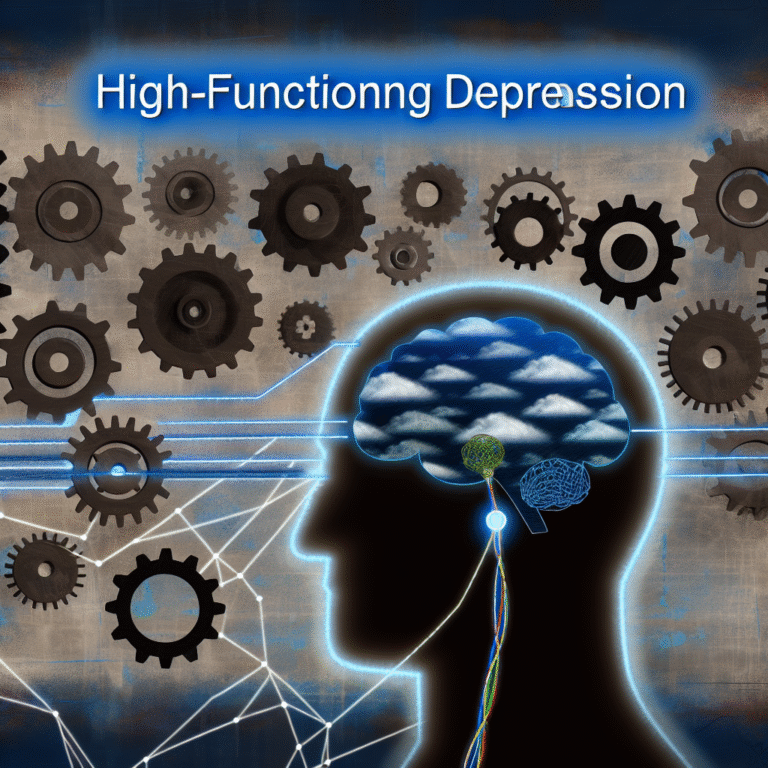
Joining Forces: Why Group Therapy is a Game Changer for Social Anxiety
Introduction
Imagine standing on a stage as the spotlight beams down, your heart racing like a drum solo, palms clammy, thoughts swirling with dread. Social anxiety is much more than just stage fright; it’s a pervasive struggle that can rob individuals of meaningful connections and memorable experiences. Today, however, we explore an empowering approach that is gaining recognition for its efficacy: group therapy. In this comprehensive article, we will delve into the intricacies of why Joining Forces: Why Group Therapy is a Game Changer for Social Anxiety, offering unique insights, real-world case studies, and evidence-backed strategies that illuminate the path toward healing.
Understanding Social Anxiety
Before unraveling the transformative nature of group therapy, understanding social anxiety is fundamental. This condition manifests as an intense fear of social situations, particularly those that might lead to judgment or embarrassment. According to the Anxiety and Depression Association of America, social anxiety disorder affects approximately 15 million adults in the United States alone. The impacts can be debilitating, preventing individuals from pursuing careers, friendships, and meaningful relationships.
Table 1: Key Statistics on Social Anxiety Disorder
| Statistic | Percentage |
|---|---|
| Adults affected in the U.S. | 7% |
| Average age of onset | 13 years |
| Percentage seeking treatment | 36% |
| Success rate of cognitive-behavioral therapy | 50-70% |
As mental health professionals continue to seek innovative solutions to support those with social anxiety, one approach rises prominently above others: group therapy. By harnessing the power of collective healing, individuals can not only navigate their fears but also cultivate friendships that enhance their healing journey.
The Transformative Power of Group Therapy
1. Building Community and Connection
One of the most compelling reasons why Joining Forces: Why Group Therapy is a Game Changer for Social Anxiety is the sense of community it fosters. Many individuals struggling with social anxiety feel isolated and misunderstood, trapped in their own minds. Group therapy creates a safe, welcoming environment where participants can share their experiences without fear of judgment.
Case Study: Sarah’s Journey to Connection
Sarah, a 28-year-old teacher, struggled with overwhelming anxiety in social settings. After years of isolation, she joined a group therapy that focused on social anxiety. In her sessions, she discovered others who faced similar challenges. This realization was eye-opening; she began to share her own fears and, in turn, listened to others. The supportive environment helped Sarah realize she wasn’t alone, fostering a vital sense of belonging.
Analysis: Sarah’s experience underscores the importance of connection in group therapy. By recognizing shared struggles, participants can find solace and strength, vital components needed to combat social anxiety.
2. Peer Support: The Healing Factor
When participating in group therapy, individuals are exposed to the healing power of peer support. Mutual encouragement is a hallmark of group sessions, allowing members to challenge and motivate one another.
Chart 1: Benefits of Peer Support in Group Therapy
| Benefit | Description |
|---|---|
| Increased Confidence | Support from peers helps build self-esteem. |
| Motivation | Members encourage each other to step out of comfort zones. |
| Accountability | Regular check-ins create a sense of responsibility. |
3. Learning Through Shared Experiences
In group therapy settings, participants can share coping strategies that have worked for them. Through storytelling, members can learn new techniques for managing anxiety.
Case Study: Mark’s Discovery of Coping Mechanisms
Mark, a 35-year-old construction worker, struggled with speaking at work meetings. In group, he learned various techniques from others, such as visualization and breath control. Implementing these strategies not only helped him feel less anxious but also improved his job performance significantly.
Analysis: Mark’s case illustrates how learning from peers can provide effective tools for facing social anxiety. Each member brings unique insights, turning personal journeys into collective resources.
4. Professional Guidance in a Safe Space
Although group therapy is based on peer interaction, the guidance of a trained therapist is crucial. Facilitators provide structure and ensure that discussions remain constructive and beneficial. They help navigate sensitive topics and foster an atmosphere of trust.
Case Study: Ella’s Growth Through Expert Support
Ella, who grappled with extreme social anxiety, found herself overwhelmed in social interactions. In a structured group, her therapist guided the conversations, helping Ella learn to express her feelings. Over time, she began to engage with other members, ultimately participating in social activities outside of therapy.
Analysis: Ella’s experience highlights the importance of professional oversight in group therapy. The therapist not only steers the group but also provides personalized feedback, enabling members to thrive.
5. Exposure Therapy within a Supportive Framework
Group therapy can incorporate elements of exposure therapy, gradually introducing members to social situations they fear within the safety of the group. This gradual exposure helps desensitize participants to their anxiety triggers, easing the path toward social engagement.
Chart 2: Steps in Exposure Therapy for Social Anxiety
| Step | Description |
|---|---|
| Identify Triggers | Participants list social situations they fear. |
| Gradual Exposure | Members support each other as they engage in low-stress situations. |
| Positive Feedback | Sessions conclude with shared experiences and encouragement. |
Conclusion: Embracing the Change
As we explore the narrative of Joining Forces: Why Group Therapy is a Game Changer for Social Anxiety, it’s clear that this approach nurtures hope, connection, and resilience. The transformative power of group therapy lies not just in sharing struggles but in the collaborative healing journey it facilitates.
Participants learn from each other, share coping mechanisms, and ultimately foster a sense of community that combats the loneliness often associated with social anxiety. For those seeking healing, the key takeaway is this: you are not alone. Together, in the supportive embrace of group therapy, meaningful change is within reach.
FAQs About Group Therapy for Social Anxiety
1. What is group therapy?
Group therapy involves a therapist-led group of individuals discussing and addressing specific issues, such as social anxiety, providing various perspectives and support.
2. How does group therapy differ from individual therapy?
While individual therapy focuses on personal insights and strategies, group therapy offers collective support, peer learning, and shared experiences that can enhance the healing process.
3. Is group therapy effective for everyone with social anxiety?
Group therapy can be highly effective; however, it may not be suitable for everyone. Individuals should consult with a healthcare provider to determine the best approach for their needs.
4. How do I find a group therapy program?
Look for local mental health clinics, community centers, or therapists who specialize in group therapy for social anxiety. Online platforms and support groups are also viable options.
5. What can I expect in a group therapy session?
Expect a safe, structured environment where members share their experiences, support one another, and engage in therapeutic activities designed to address social anxiety.
Final Thoughts
Joining forces in the face of social anxiety can empower individuals in unimaginable ways. Whether you seek solace in shared experiences, the guidance of professional therapists, or invaluable coping strategies, group therapy presents a compelling pathway to reclaiming joy in social contexts. Embrace this opportunity, take that first step, and witness how collective healing can change your life for the better.

















